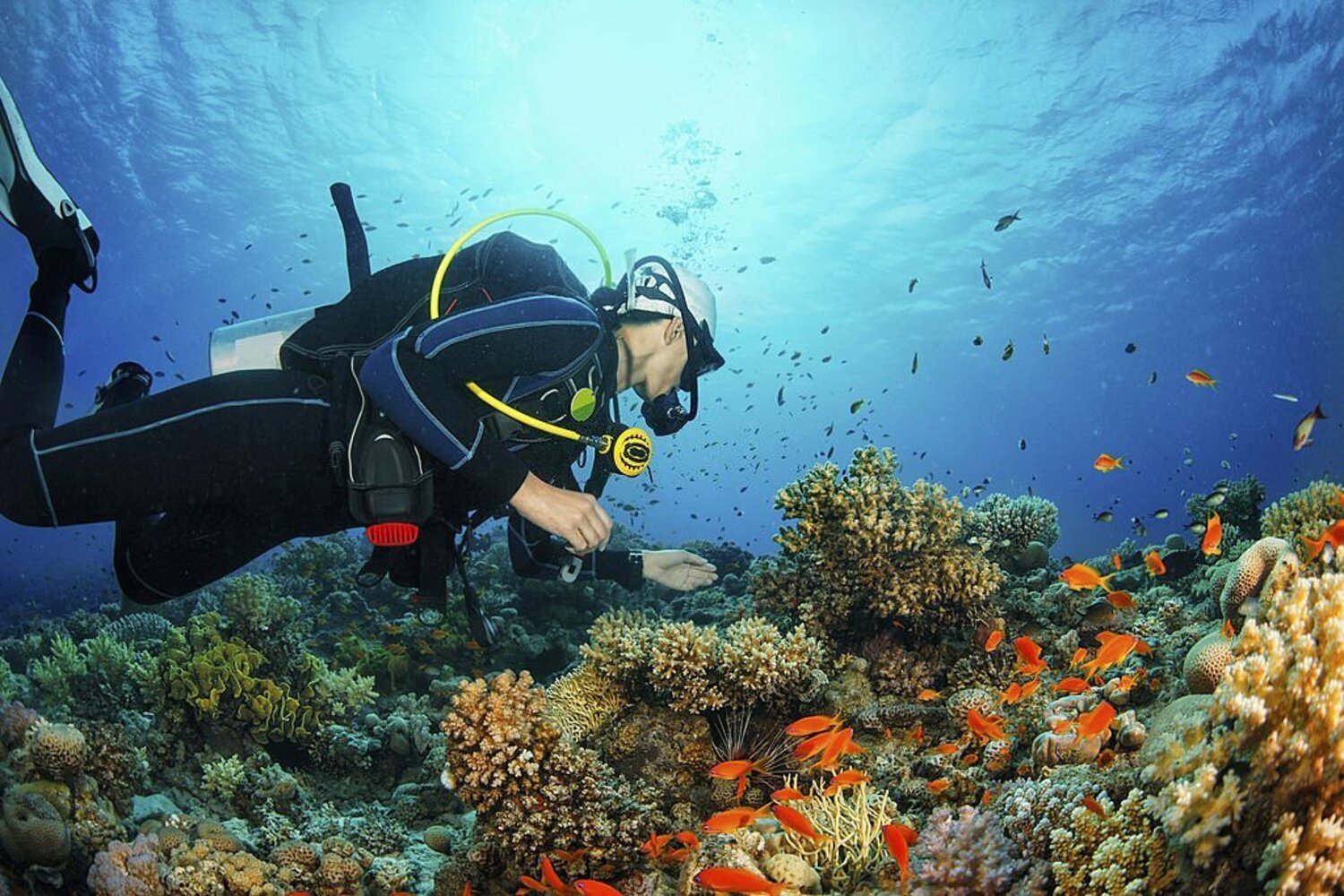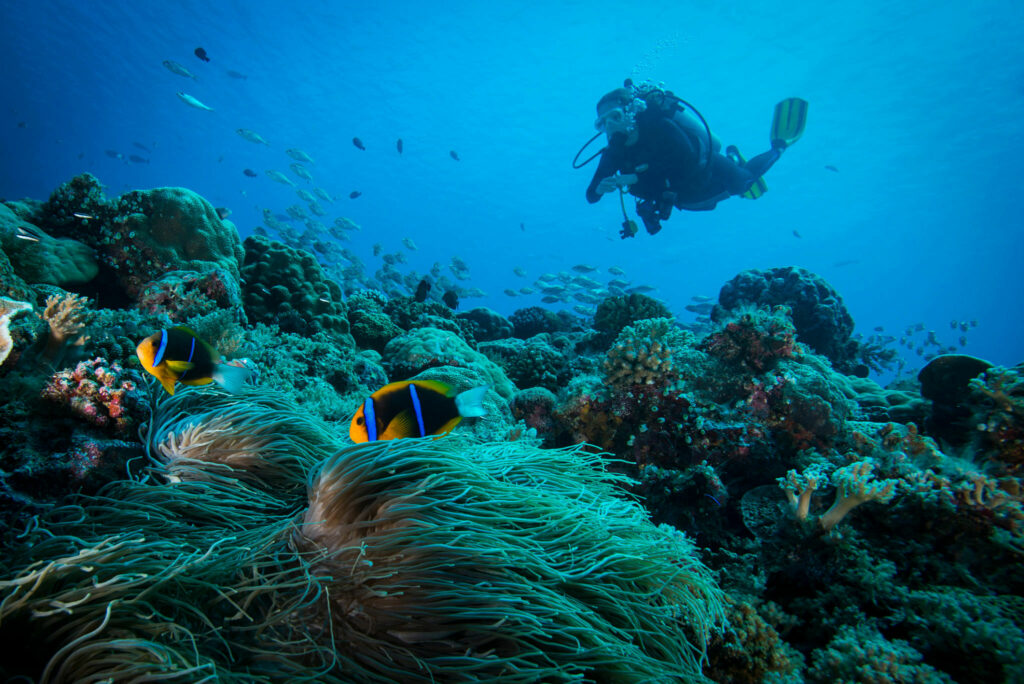Surface Interval in Scuba Diving? 7 Things You Should do While on the Surface Interval

We have to take surface intervals when we dive more than once in a single day. They assist in preventing decompression sickness and keeping us safe. The greatest risk associated with scuba diving is decompression sickness, so we need to take every precaution to prevent it. We can dive safely and well by adhering to a few basic safety precautions, such as taking a surface interval.
But what can we do while we wait with all this time on the boat between dives? Continue reading to learn the benefits of surface intervals and some activities you can do during them.
What is a Surface Interval in Scuba Diving
You may be wondering what a surface interval is and why scuba divers do them if you’re new to the sport. During your Open Water Diver program, you learn everything there is to know about diving safely, including how to schedule dives and surface breaks.
To help you understand or remember, here is a quick explanation:
Nitrogen builds up in our bodies when we breathe air at depth for extended periods of time; the amount of nitrogen increases with dive time and depth.
In small quantities, this nitrogen buildup is not hazardous and will safely off-gas as long as we adhere to standard scuba diving procedures, which include: ascending gradually and slowly, doing a safety stop*, avoiding flying and ascending to altitude on land for 18 hours after scuba diving, and taking surface intervals.
*At the conclusion of a dive, staying three minutes or so below the surface at normally 5 metres (15 feet) depth, before coming to the surface.
The time that passes between dives that we spend on the surface is called a surface interval. The more time we spend above the surface, the more nitrogen is released, allowing for longer and deeper dives in the future.
In comparison to a shallower dive (less than 18 metres/60 feet), a deep first dive (18 to 30 metres/60 to 98 feet) would require a longer surface interval, particularly if you wanted to do a deeper dive on the second dive as well.
How Does a Surface Interval Affect Your Body?
A surface interval, as previously indicated, is the period of time a diver stays at the surface following a dive to allow their body to expel any leftover nitrogen. Put differently, the time after a dive when nitrogen levels return to normal is known as the surface interval. This process takes longer the deeper and longer you were underwater during the prior dive.
However, you don’t have to wait for all nitrogen levels to stabilise before diving again. Rather, the amount of nitrogen that remains in your tissues must be taken into consideration. The allotted time for the subsequent dive will be less if the surface interval is short in order to remain within approved bounds.
A Guide to Surface Interval Planning
It’s not too hard to plan your permitted dive times and surface intervals. Dive computers perform the calculations for you. The computer will tell you how long you can stay at the planned depth for the next dive during a surface interval following a dive. You remain on the surface longer if you wish to dive for a longer period of time, until the computer displays the desired time. Dive tables and apps can also be used for this.
You will be on the surface in between dives, so you’ll want to be ready for anything the environment may throw at you. For instance, bring a dry bag in case of rain so that items can be kept dry in between dives. Alternatively, if you’re concerned about getting cold, make sure to stay as dry as possible and pack warm clothes for the dive site or the boat. Remember to bring cool drinks and sunscreen that is safe for the reef if the weather is expected to be sunny.
What to do During a Surface Interval?
The ideal time to stay hydrated, eat, and socialise with other divers on your trip is during a surface interval. During this time, divers can take in their surroundings, make plans for their next dive, and stay in touch with their dive partner or team. Additionally, spend some time conversing with the dive crew. Steer clear of alcohol and strenuous exercise right after diving as these may put divers at risk for DCS.
ALSO READ : How Do You Breathe While Scuba Diving?
The Top Seven Things You Should do While on the Surface
After logging the depth and duration of your dive, your dive computer can determine how long you must wait on the surface before you can begin your next dive. Your dive time and the amount of time you have spent on the surface are used by the computer to determine how long your surface interval is. Simple!
If you want to do things the old-fashioned way, you can look up this information in a dive table. However, be aware that these tables are typically much more conservative as they account for the likelihood that you may have stayed at the maximum depth during each profile of the whole dive. That being said, it is wise to take precautions and keep yourself safe.
1. Get warm
One of the biggest hazards of scuba diving is hypothermia. It’s simple to get too chilly without even recognizing it. On your subsequent dive, you will cool down considerably more quickly if you don’t warm up during the surface interval.
While it may be tempting to spend the surface interval in your wetsuit, it is preferable to remove it, wrap yourself in a towel, sit outside, or wear a hoodie. The next dive will feel more cosy the warmer you can get during the surface interval. Maintaining your warmth is especially more crucial if you dive in cold water. But remember do not jump into a scorching hot shower if you are on a liveaboard as warming the body quickly can lead to the onset of decompression sickness.
Best advice: If you are easily chilled, carry a woolly hat in your dive gear and put it on as soon as you step out of the water.
2. Get your equipment set up and checked
Don’t wait until the last minute to prepare your gear for the upcoming dive. It is crucial to set up and inspect your equipment beforehand to make sure everything is in working order and nothing needs to be switched out or replaced. After the first dive, exit the water, change out of your wetsuit, warm up, and grab a drink of water before setting up your gear for the next dive. Before you settle in and unwind, do this.
3. Hydrate
When scuba diving, dehydration can make you more susceptible to decompression sickness. Water consumption is crucial prior to the dive, during the surface interval, and following the dive. In addition to providing you with moisture, a hot tea can help you feel warmer. Drinking water is usually provided on dive boats, but always bring extra just in case.
4. Make friends
One of the best things about going on scuba diving trips is that you get to know everyone else on the boat. It’s really simple to meet new people and possibly become dive buddies because of this. During the surface interval, share pictures and videos, recommend dive trips, trade dive stories, and add each other on social media.
5. Have a snack
You may get fatigued from scuba diving. Eat a small snack during your surface interval to maintain your energy levels, diving on an empty stomach is uncomfortable. Nuts, oats, fruit, biscuits, and crackers are a few healthy snack options. Steer clear of foods that are greasy or spicy, and stop eating before you feel satisfied. The best advice is to make sure you still eat during your surface intervals if you are prone to motion sickness and are going boat diving. Simple meals can help alleviate symptoms in small doses.
6. Do not freedive
After discussing every activity you can do while on the surface, freediving is one activity you should absolutely avoid doing. On your surface interval, it could be tempting to dive in for a quick snorkel. As long as you remain on the surface, that’s okay. However, freediving beneath the water can be dangerous.
This is due to the fact that breath-hold diving may still have an impact on the nitrogen levels you accumulated during the prior dive. Decompression sickness may result from the nitrogen forming bubbles caused by descending and ascending in the water. Freediving should always be avoided in between dives and after your last dive for a period of 12 hours if you have completed one dive and 18 hours if you have completed two or more dives (the same regulations apply as for flying).
7. Take a nap
Scuba diving can be exhausting, as we discussed earlier. There’s nothing wrong with power napping after rehydrating and getting set up for the next dive. A group of scuba divers lounging on the boat deck, absorbing the sun’s rays akin to a colony of seals, is a common sight during surface intervals. But be careful not to burn and apply sunscreen that is safe for reefs.
ALSO READ : 5 Ways To Prevent Your Dive Mask From Leaking
Enjoy a Diving Trip in Raja Ampat and Komodo with La Galigo Liveaboard

La Galigo is known as one of the best liveaboard diving boats in Raja Ampat Indonesia, and it offers trips to well-known diving destinations such as Komodo and Raja Ampat. The Coral Triangle is located in Indonesia, which has the highest marine biodiversity on the planet.
La Galigo Liveaboard Diving was founded in 2015 by two avid divers who wanted to explore some of Indonesia’s pristine reefs but found that all existing scuba diving options were frequently out of their budget, and wanted to provide an affordable option for everyone to be able to explore these beautiful places.
La Galigo Liveaboard Diving in Raja Ampat & Komodo is a friends and family affair, and our liveaboard diving trips are always focused on fun, safety, guest comfortability, and are exceptional value for money. Our trip prices range from $2,160 for a six-day Komodo liveaboard diving trip to $3,375 for an eight-day Raja Ampat liveaboard diving trip. The price includes four meals a day, diving three to four times a day or snorkelling, and land tours.




